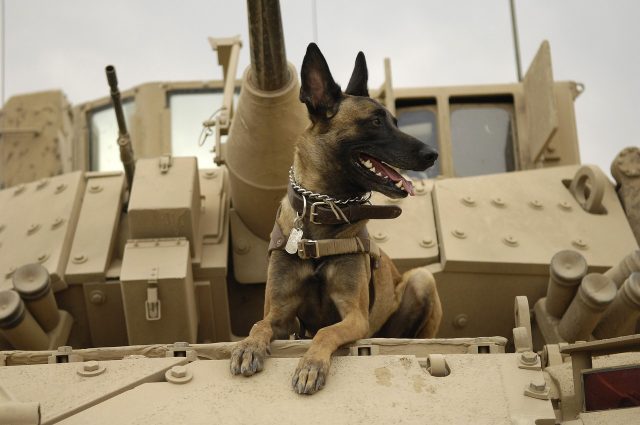Service dogs are crucial in assisting individuals with disabilities, providing them with independence and enhancing their quality of life. These remarkable dogs undergo extensive and rigorous training to perform specific tasks that help their handlers navigate daily challenges. Understanding how service dogs get trained highlights the dedication and hard work involved and deepens our appreciation for these exceptional animals.
This article delves into the comprehensive training process of service dogs, from selection to certification, illustrating the journey these dogs undertake to become reliable partners.

The Selection Process for Service Dogs
The journey of training a service dog begins with a careful selection process. Not every dog is suitable for service work; therefore, organizations look for specific traits such as temperament, intelligence, and physical health. Breeds commonly chosen for service work include Labrador Retrievers, Golden Retrievers, and German Shepherds due to their trainability and calm demeanor. Puppies are often assessed for their ability to focus, adapt to new situations, and be willing to learn, which are essential qualities for a successful service dog.
Find Out Which Dogs Make Top Service Animals
Basic Obedience Training for Service Dogs
Basic obedience training is the foundational phase where service dogs learn essential commands such as sit, stay, come, and heel. This stage is crucial for establishing control and ensuring the dog can follow instructions reliably. Trainers use positive reinforcement techniques, rewarding the dogs with treats, praise, and affection for correctly performing commands. Consistent training helps instill discipline and responsiveness, forming the basis for more advanced skills and tasks.
Advanced Training and Socialization
After mastering basic obedience, service dogs move on to advanced training and socialization. During this phase, dogs are exposed to various environments, sounds, and situations to ensure they remain calm and focused in public settings. Socialization is vital as service dogs must be comfortable and non-reactive in different scenarios, such as crowded areas, public transportation, and busy streets. Advanced training also includes teaching dogs more complex commands and tasks tailored to the specific needs of their future handlers.
Specialized Task Training for Service Dogs
Specialized task training is a critical component of how service dogs get trained. Depending on the disability they will assist with, service dogs learn specific tasks that directly aid their handlers. For example, guide dogs for the blind are trained to navigate obstacles, signal changes in elevation, and follow directional commands. Hearing dogs alert their handlers to important sounds like doorbells, alarms, and approaching vehicles. Mobility assistance dogs learn to retrieve dropped items, open doors, and provide stability for individuals with physical disabilities. The training for these specialized tasks is intensive and requires precision and consistency.
Public Access Training for Service Dogs
Public access training ensures that service dogs behave appropriately in various public settings. This phase teaches dogs to remain focused on their tasks despite distractions such as other animals, people, and noises. Service dogs must exhibit impeccable manners, such as not begging for food, barking excessively, or jumping on people. Maintaining a calm and composed demeanor in public is crucial for service dogs to assist their handlers and blend seamlessly into different environments effectively.
Certification and Evaluation of Service Dogs
Before a service dog can begin working with their handler, they must pass a series of evaluations and obtain certification. These assessments test the dog’s obedience, task performance, and behavior in public settings. Certification ensures that the dog meets the high standards required for service work and can reliably perform their duties. Organizations typically have rigorous criteria and protocols for evaluating service dogs, ensuring only the best candidates are certified.
The Role of Handlers in Service Dog Training
Handlers play a pivotal role in service dogs’ training and ongoing success. They undergo training to learn how to work effectively with their service dog, reinforcing commands and maintaining the dog’s skills. This partnership is built on mutual trust and understanding, with handlers providing guidance and support to their dogs. Ongoing training sessions help strengthen the bond between handler and dog, ensuring they function as a cohesive team.
Learn About The Top Intelligent Dog Breeds
Ongoing Training and Maintenance
Service dogs require continuous training and maintenance to keep their skills sharp even after certification. Regular practice sessions and positive reinforcement help prevent skill deterioration and reinforce good behavior. Handlers are encouraged to work with their service dogs regularly, maintaining the high standards set during the initial training phases. Ongoing training is essential for adapting to any changes in the handler’s needs and ensuring the service dog remains effective throughout their working life.
Personal Stories and Testimonials
Hearing from those who train and work with service dogs provides valuable insights into the training process. For example, a trainer might share a story about a dog that excelled in detecting medical conditions, saving their handler’s life on multiple occasions. Another testimonial could highlight the journey of a handler who gained newfound independence and confidence thanks to their dedicated service dog. These personal stories underscore well-trained service dogs’ profound impact on their handlers’ lives.
Explore The Most Intelligent Dogs On The Planet
Conclusion: The Rigorous Journey of Training Service Dogs
Understanding how service dogs get trained reveals the dedication and expertise required to prepare these animals for their vital roles. The process is comprehensive and demanding, from initial selection to specialized task training and certification. Recognizing the extensive training that service dogs undergo deepens our appreciation for their contributions and underscores the importance of supporting these remarkable animals and the organizations that train them.

 Toledo, United States.
Toledo, United States.